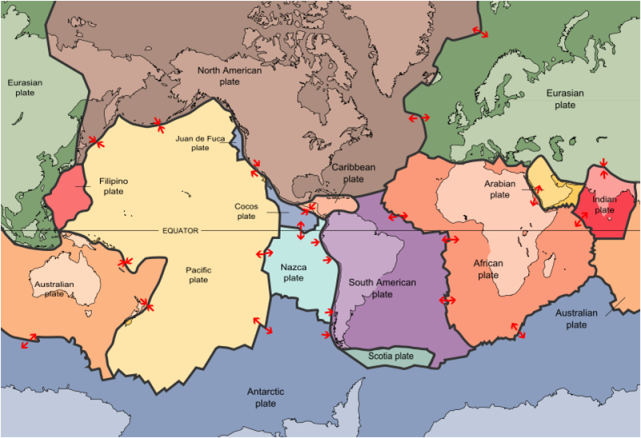What is a Plate?
The surface of the Earth is broken up into large plates. It’s easy to confuse these plates with the Earth’s crust – the thin outermost layer of the Earth. But there is more to the structure of the Earth than this simple image of a ‘cracked egg-shell’.
The Earth’s layers can be defined in two different ways – based on the chemical composition or the mechanical properties of the rock. To understand what plates are, it is important to understand both of these different models.
Chemical composition
Mechanical properties
When we talk about tectonic or lithospheric plates, we mean the sections into which the lithosphere is cracked. The surface of the Earth is divided into 7 major and 8 minor plates. The largest plates are the Antarctic, Eurasian, and North American plates. Plates are on average 125km thick, reaching maximum thickness below mountain ranges. Oceanic plates (50-100km) are thinner than the continental plates (up to 200km) and even thinner at the ocean ridges where the temperatures are higher. Some plates are large enough to consist of both continental and oceanic crustal portions (e.g. the African or South American plates) whilst the Pacific Plate is almost entirely oceanic.

Major and minor tectonic plates
The Earth is roughly spherical, so these plates are fractured into curved sections which are in constant motion relative to each other and meet in various ways along their edges – these are the ‘plate boundaries’, where most volcanoes and earthquakes occur. The mechanism by which plates move is still a highly controversial subject amongst Earth scientists.
How do plates move?